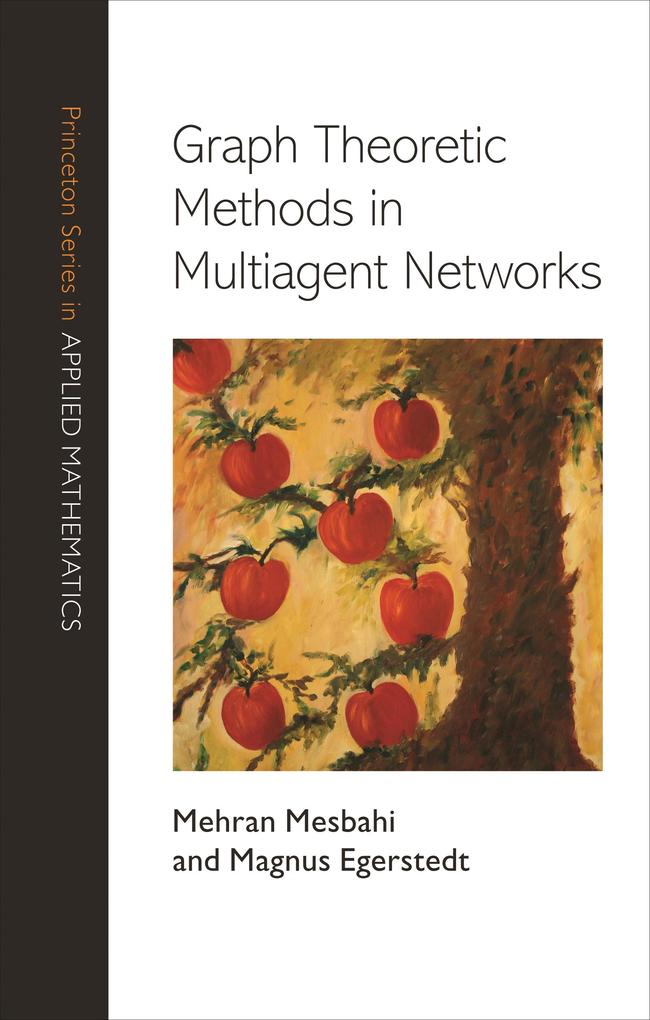
Zustellung: Do, 24.07. - Di, 29.07.
Versand in 2 Wochen
VersandkostenfreiBestellen & in Filiale abholen:
"This well-organized book is an extensive and complete introduction to graph theoretic methods in the context of multiagent and multivehicle cooperative networks. The presentation of the material is elegant and in addition to basic results, the book includes new topics not commonly found in the literature. Ideal for graduate students and researchers, the book represents a significant contribution to the emerging field of cooperative control and consensus."--Randy Beard, Brigham Young University
"This comprehensive overview of multiagent coordination brings together the existing literature on the subject and presents it in a clean, pedagogical fashion. The book will be useful to those in the areas of control theory, signal processing, and related disciplines."--Ali Jadbabaie, University of Pennsylvania
"This book focuses on graph theoretic techniques in multiagent systems, with a strong emphasis on agreement problems. It covers a good selection of issues and will make a solid textbook for advanced courses in the field."--Richard Murray, California Institute of Technology
"This comprehensive overview of multiagent coordination brings together the existing literature on the subject and presents it in a clean, pedagogical fashion. The book will be useful to those in the areas of control theory, signal processing, and related disciplines."--Ali Jadbabaie, University of Pennsylvania
"This book focuses on graph theoretic techniques in multiagent systems, with a strong emphasis on agreement problems. It covers a good selection of issues and will make a solid textbook for advanced courses in the field."--Richard Murray, California Institute of Technology
Inhaltsverzeichnis
Preface xi Notation xv PART 1. FOUNDATIONS 1 Chapter 1. Introduction 3 1.1 Hello, Networked World 3 1.2 Multiagent Systems 4 1.3 Information Exchange via Local Interactions 8 1.4 Graph-based Interaction Models 10 1.5 Looking Ahead 12 Chapter 2. Graph Theory 14 2.1 Graphs 14 2.2 Variations on the Theme 20 2.3 Graphs and Matrices 22 2.4 Algebraic and Spectral Graph Theory 27 2.5 Graph Symmetries 33 Chapter 3. The Agreement Protocol: Part I-The Static Case 42 3.1 Reaching Agreement: Undirected Networks 46 3.2 Reaching Agreement: Directed Networks 48 3.3 Agreement and Markov Chains 58 3.4 The Factorization Lemma 61 Chapter 4. The Agreement Protocol: Part II-Lyapunov and LaSalle 72 4.1 Agreement via Lyapunov Functions 72 4.2 Agreement over Switching Digraphs 76 4.3 Edge Agreement 77 4.4 Beyond Linearity 81 Chapter 5. Probabilistic Analysis of Networks and Protocols 90 5.1 Random Graphs 90 5.2 Agreement over Random Networks 93 5.3 Agreement in the Presence of Noise 100 5.4 Other Probabilistic Models of Networks 108 PART 2. MULTIAGENT NETWORKS 115 Chapter 6. Formation Control 117 6.1 Formation Specification: Shapes 118 6.2 Formation Specification: Relative States 123 6.3 Shape-based Control 127 6.4 Relative State-based Control 130 6.5 Dynamic Formation Selection 143 6.6 Assigning Roles 151 Chapter 7. Mobile Robots 159 7.1 Cooperative Robotics 160 7.2 Weighted Graph-based Feedback 162 7.3 Dynamic Graphs 167 7.4 Formation Control Revisited 169 7.5 The Coverage Problem 176 Chapter 8. Distributed Estimation 191 8.1 Distributed Linear Least Squares 191 8.2 Pulsed Intercluster Communication 199 8.3 Implementation over Wireless Networks 208 8.4 Distributed Kalman Filtering 212 Chapter 9. Social Networks, Epidemics, and Games 226 9.1 Diffusion on Social Networks-The Max Protocol 226 9.2 The Threshold Protocol 229 9.3 Epidemics 233 9.4 The Chip Firing Game 243 PART 3. NETWORKS AS SYSTEMS 251 Chapter 10. Agreement with Inputs and Outputs 253 10.1 The Basic Input-Output Setup 253 10.2 Graph Theoretic Controllability: The SISO Case 260 10.3 Graph Theoretic Controllability: The MIMO Case 269 10.4 Agreement Reachability 276 10.5 Network Feedback 280 10.6 Optimal Control 282 Chapter 11. Synthesis of Networks 293 11.1 Network Formation 293 11.2 Local Formation Games 294 11.3 Potential Games and Best Response Dynamics 299 11.4 Network Synthesis: A Global Perspective 305 11.5 Discrete and Greedy 309 11.6 Optimizing the Weighted Agreement 312 Chapter 12. Dynamic Graph Processes 319 12.1 State-dependent Graphs 319 12.2 Graphical Equations 323 12.3 Dynamic Graph Controllability 326 12.4 What Graphs Can Be Realized? 336 12.5 Planning over Proximity Graphs 338 Chapter 13. Higher-order Networks 344 13.1 Simplicial Complexes 344 13.2 Combinatorial Laplacians 347 13.3 Triangulations and the Rips Complex 350 13.4 The Nerve Complex 354 Appendix A. 362 A.1 Analysis 362 A.2 Matrix Theory 363 A.3 Control Theory 366 A.4 Probability 372 A.5 Optimization and Games 375 Bibliography 379 Index 399
Produktdetails
Erscheinungsdatum
21. Juli 2010
Sprache
englisch
Seitenanzahl
424
Autor/Autorin
Mehran Mesbahi, Magnus Egerstedt
Verlag/Hersteller
Produktart
gebunden
Gewicht
816 g
Größe (L/B/H)
242/164/32 mm
ISBN
9780691140612
Entdecken Sie mehr
Pressestimmen
Presently, there are few books on multiagent systems. Thus, this book can be a useful reference book for graduate students and researchers focusing on systems, controls, and robotics, and help them to better know and study multiagent systems. -- Long Wang Mathematical Reviews
Bewertungen
0 Bewertungen
Es wurden noch keine Bewertungen abgegeben. Schreiben Sie die erste Bewertung zu "Graph Theoretic Methods in Multiagent Networks" und helfen Sie damit anderen bei der Kaufentscheidung.









